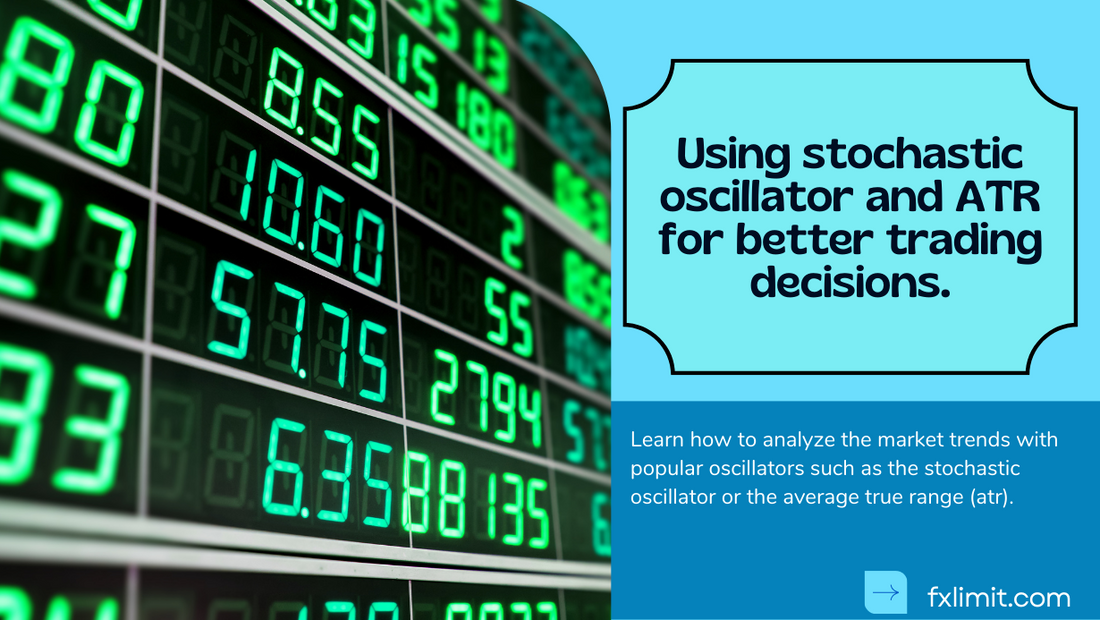
10 Key Considerations for Oscillators in Forex Trading
Share
When it comes to forex trading, there are many tools and indicators that traders can use to analyze the market and make informed decisions. One such tool is the oscillator, which is a popular technical indicator used to identify overbought and oversold conditions in the market. Oscillators can be a valuable addition to any trader's toolkit, but it's important to understand how to use them effectively. In this blog post, we will explore 10 key considerations for using oscillators in forex trading.
1. What is an oscillator?
An oscillator is a technical indicator that fluctuates between two extreme values to indicate overbought or oversold conditions in the market. It is typically displayed as a line graph below the price chart and can help traders identify potential reversal points.
2. Choose the right oscillator for your trading style
There are various types of oscillators available, such as the Relative Strength Index (RSI), Stochastic Oscillator, and Moving Average Convergence Divergence (MACD). Each oscillator has its own strengths and weaknesses, so it's important to choose one that aligns with your trading style and preferences.
3. Understand the oscillator's parameters
Oscillators have specific parameters that can be adjusted to suit different market conditions. These parameters include the period, smoothing factor, and overbought/oversold levels. Understanding how these parameters work and when to adjust them can enhance the effectiveness of the oscillator.
4. Use oscillators in conjunction with other indicators
Oscillators should not be used in isolation. They work best when combined with other technical indicators, such as trend lines, moving averages, or support and resistance levels. This can provide a more comprehensive view of the market and increase the accuracy of your trading signals.
5. Avoid over-reliance on oscillators
While oscillators can be useful, it's important not to rely solely on them for making trading decisions. They are just one tool in a trader's arsenal and should be used in conjunction with other forms of analysis, such as fundamental analysis and market sentiment.
6. Consider the time frame
The effectiveness of oscillators can vary depending on the time frame you are trading. Some oscillators work better on shorter time frames, while others are more suited for longer-term analysis. Consider the time frame you are trading and choose an oscillator that aligns with it.
7. Pay attention to divergence
Divergence occurs when the price of a currency pair moves in the opposite direction of the oscillator. This can be a powerful signal of a potential trend reversal. Paying attention to divergence can help you identify high-probability trading opportunities.
8. Use oscillators to confirm trends
Oscillators can be used to confirm the strength of a trend. For example, if the price of a currency pair is in an uptrend and the oscillator is also trending upwards, it can provide confirmation that the trend is strong and likely to continue.
9. Be aware of market conditions
Market conditions can greatly impact the effectiveness of oscillators. In trending markets, oscillators may stay in overbought or oversold territory for extended periods, leading to false signals. In range-bound markets, oscillators can be more effective in identifying potential reversal points.
10. Practice and refine your strategy
Like any trading tool, using oscillators effectively requires practice and refinement. Take the time to backtest different strategies and parameters, and analyze the results. Continuously refine your strategy based on your findings to improve your trading performance.
In conclusion, oscillators can be valuable tools for forex traders when used correctly. By considering these 10 key factors, traders can enhance their understanding and utilization of oscillators, leading to more informed trading decisions and potentially improved profitability.



